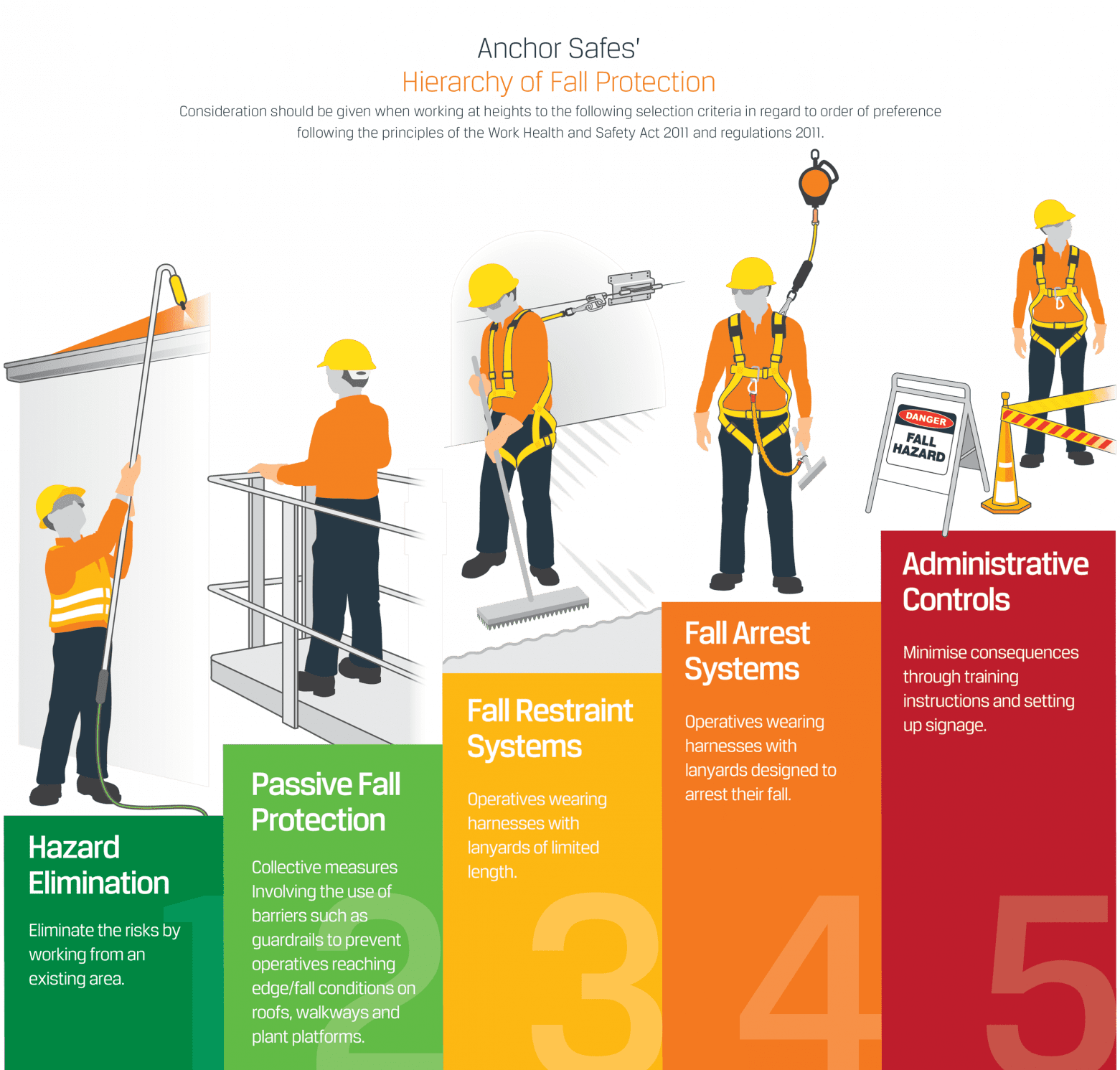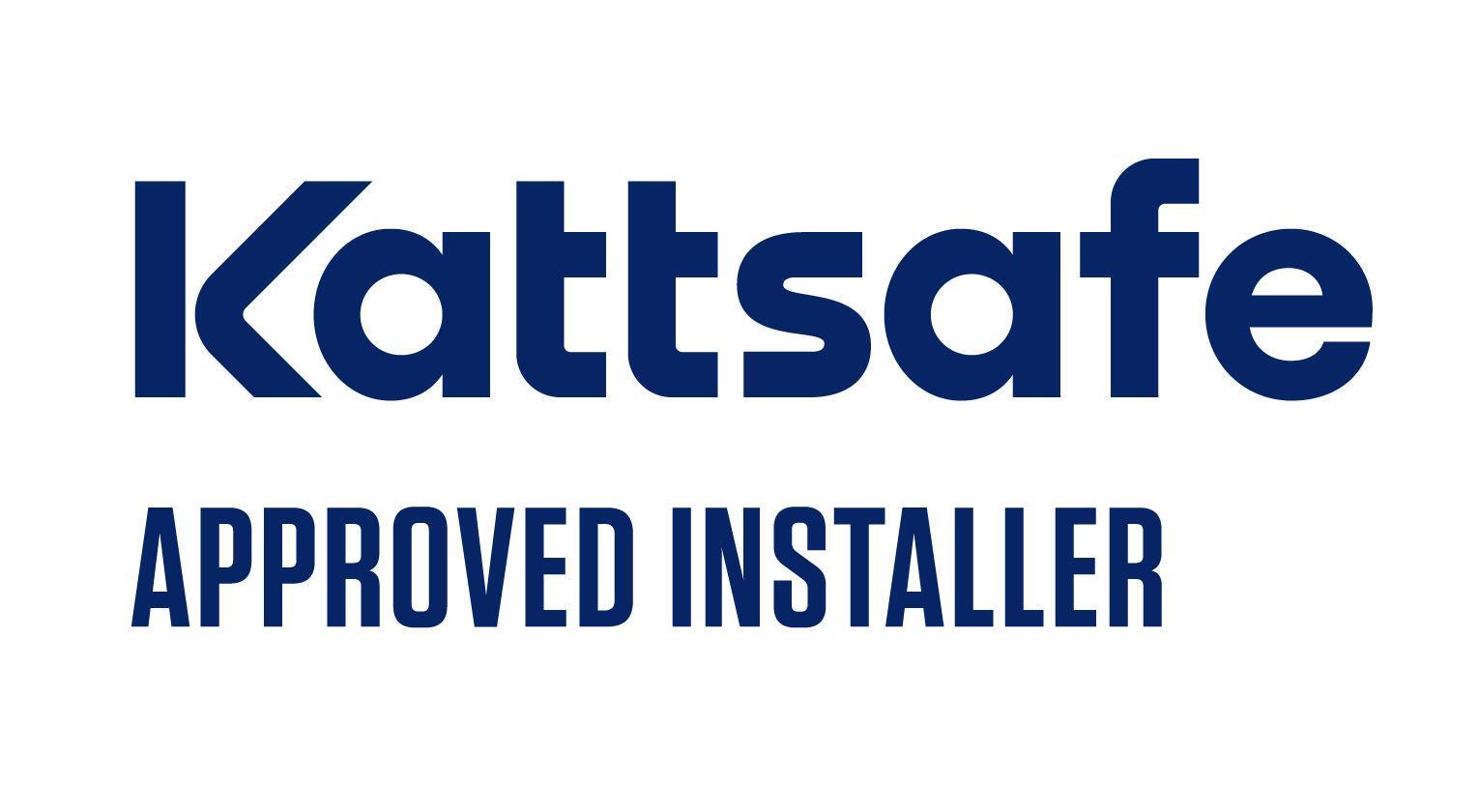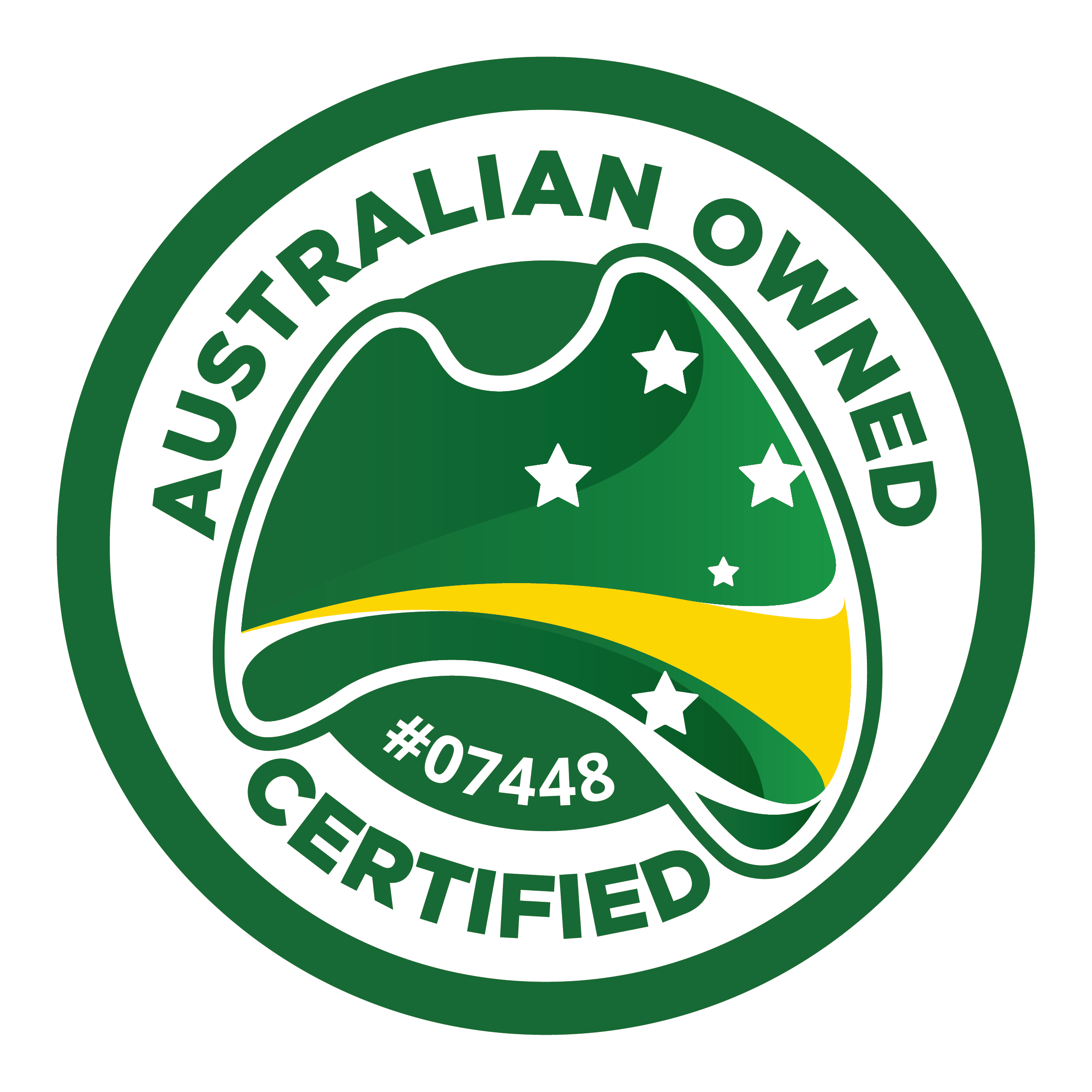The hierarchy of control measures is a system for controlling risks in the workplace, that should be used to minimise or eliminate the inherent risks associated with working at heights. Properly understanding the hierarchy of control can help Persons Conducting Business or Undertaking (PCBU) that involves work at height, to eliminate, control, or reduce risks for their workers.
What is the Hierarchy of control?
The hierarchy of control measures is a risk control system that provides a clear pathway to how identified risks should be dealt with in accordance with Safe Work Australia’s guidelines on managing risks. The system ranks control measures from the highest to lowest levels of protection for the worker.
When it comes to working at height, the ultimate goal of the hierarchy of control is to prevent a fall or injury by assessing the situation against the control measures of elimination, substitution, isolation, engineering controls, administrative controls, and personal protective equipment (PPE).
Anchor Safe rely on the hierarchy of control in determining the type of height safety system required for a particular job. Through the use of the risk prevention hierarchy, it is possible to determine the highest level of control that can be achieved when working with a height hazard.
Using the Hierarchy of Control for Working at Heights
1. Elimination (highest level of control)
Elimination of the hazard or risk provides the highest level of protection and most effective control. Using this control, the hazard becomes void and therefore does not expose employees to a risk of injury.
In Practice for Working at Height Scenarios
Can the work be done on the ground avoiding exposure to working at height? Could the risk of falling be eliminated by the use of solid construction such as walls? A redesign should be considered to eliminate the need for working at heights.
An example of this may include placing an air-conditioner unit on the ground rather than on the roof. Although placing air conditioner units on roofs does offer some advantages, it introduces additional risks of falls when maintenance is required. Therefore, moving the air conditioner unit to a ground-based location eliminates the need to work at heights.

2. Reduce the Risk
The next best option if elimination is deemed as not reasonably practicable is to reduce the risk with one or more of the following controls:
- Substitution – Substitute the hazard with something safer.
- Isolation – Isolating people from the potential hazard.
- Engineering Controls – The use of machinery and/or devices to limit the hazard.
In Practice for Working at Height Scenarios
Can temporary or portable access measures such as ladders, elevated work platforms (EWP) or scaffolding be replaced with permanently mounted stairways and ladder systems or roof access hatches to minimise the risk of falls?
Can the risk be minimised through the use of permanent passive fall protection systems, such as platforms, walkways, guardrails and skylight protection to prevent workers from reaching edge/fall conditions reducing the risk of a fall from height?
Can physical barriers such as guardrails and lockable gates be erected to prevent unauthorised access to areas where there is a risk of falls or where other higher forms of risk prevention are not in place?
.

3. Administrative Controls
Administrative controls offer a low level of protection and less reliable control. This control measure uses administrative actions to minimise exposure to hazards and to reduce the level of potential harm. When it comes to height safety, administrative controls are typically the least preferred method of protection because they do not provide a physical or positive means of protection.
In Practice for Working at Height Scenarios
Can signage be implemented to control unauthorised access or warn of the dangers in the area of work?
Can work practices or procedures be changed or implemented to avoid or minimise exposure to the risks of working at heights?
Can training or information be provided to workers to inform them of the risks present and provide guidance on how to maximise their safety while performing their tasks?

4. Personal Protective Equipment (Lowest Level of Control)
The use of personal protective equipment (PPE) to protect people from harm is considered the least effective control measure due to its reliance on human behaviour and the suitability and condition of the PPE itself. The use of PPE to minimise risk should be the last resort and used only if all other measures in the hierarchy of control have been deemed to be not reasonably practicable.
While it is the lowest level of control in the hierarchy, the use of PPE to minimise risk is still relatively common in height safety systems due to the nature of the work. As mentioned above, the implementation of PPE-based fall protection systems will often be preferred before administrative controls for specific working-at-height scenarios.
In Practice for Working at Height Scenarios
Can a fall restraint system such as a static line with fixed length lanyard and harness be used to prevent operatives from reaching edge/fall conditions reducing the risk of a fall from height?
If restraint systems are not practicable, can a fall arrest system such as overhead rail systems or multiple anchor points to cover the working area and personal harnesses with lanyard shock absorbers or self-retracting lifelines be used to minimise the risk of injury should a fall occur?
It is important to note that the installation of components such as static lines, overhead rails and anchor points needs to be undertaken by a specialist. Workers using these systems will require adequate training.
.


Determining What is Reasonably Practicable
Given the extreme inherent dangers of working at heights, determining what control measures are reasonably practicable can be difficult for those who are not well-versed in height safety regulations and guidelines. This determination is important not only for keeping workers safe but for keeping companies and managers compliant with working-at-height codes and practices.
To decide if something is reasonably practicable it is important to consider all the relevant matters including;
- The likelihood of the hazard or risk
- The harm that could occur
- Knowledge about the hazard or risk
- Ways to minimise or eliminate the risk, and if these are available and suitable
- Cost, including whether the cost is grossly disproportionate to the risk.
Anchor Safe recommends seeking advice from a trusted height safety professional to determine what control measures are reasonably practicable for your worksite and to ensure your height safety systems are compliant and risks to workers minimised.
Check out Safe Work Australia’s guide on how to determine what is reasonably practicable to meet a health and safety duty for more information.
Important Further Reading
Managing Risks – Safe Work Australia
The Hierarchy of Control – Work Safe Victoria
Control Measures – Safe Work NSW
Comprehensive Height Safety Services
Anchor Safe offers comprehensive height safety services to building owners and managers, to ensure rooftops and other working at height situations are compliant with all relevant codes, standards, and regulations.
Our highly trained and experienced height safety specialists provide detailed audit and risk assessments for buildings, building portfolios or specific working-at-height scenarios, including any existing height safety systems. Our team can custom design and install a tailored height safety system specific to your needs. With ongoing maintenance and compliance testing, you can rest assured your building or worksite is completely compliant and your workers at height are safe.













